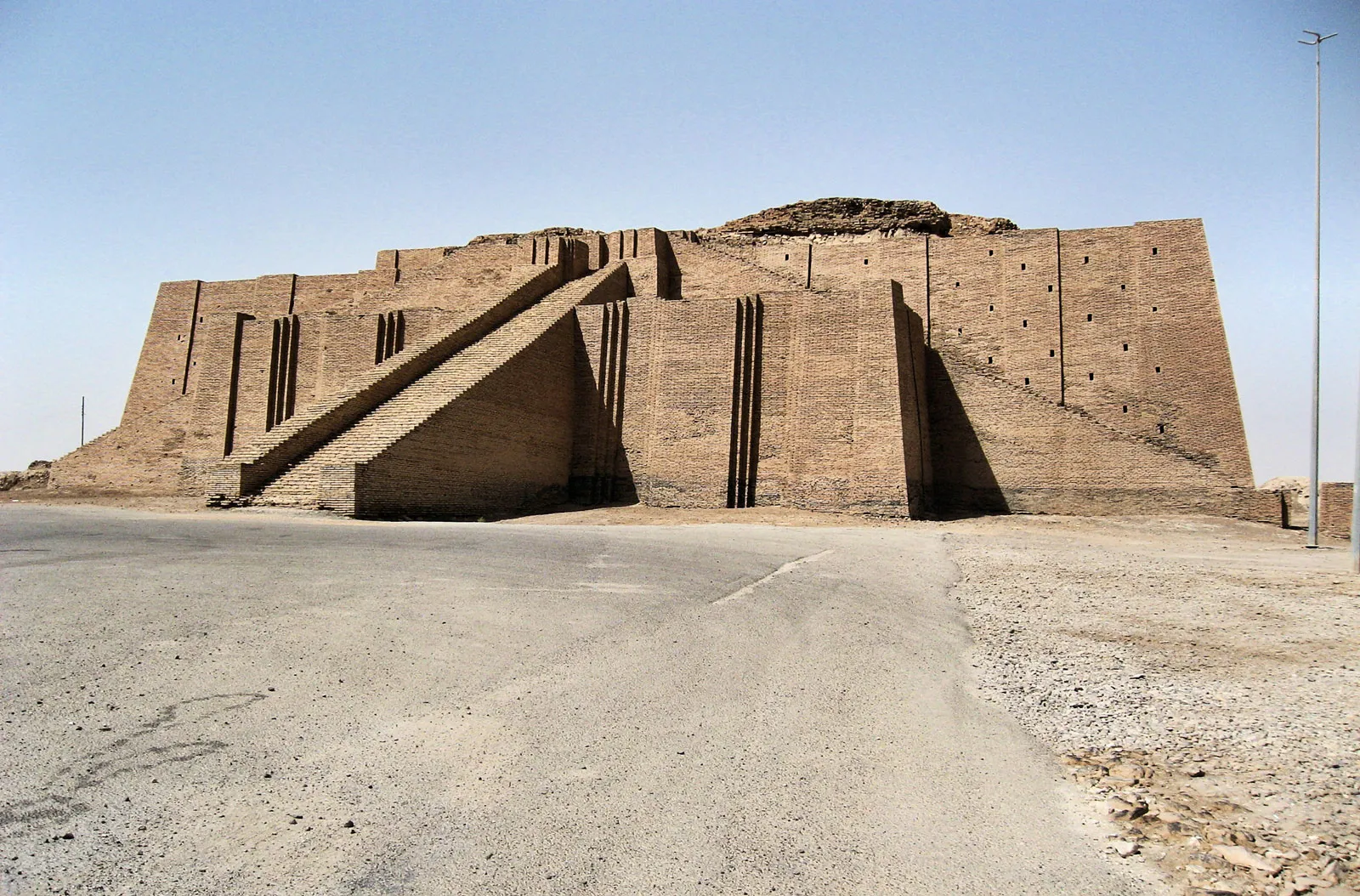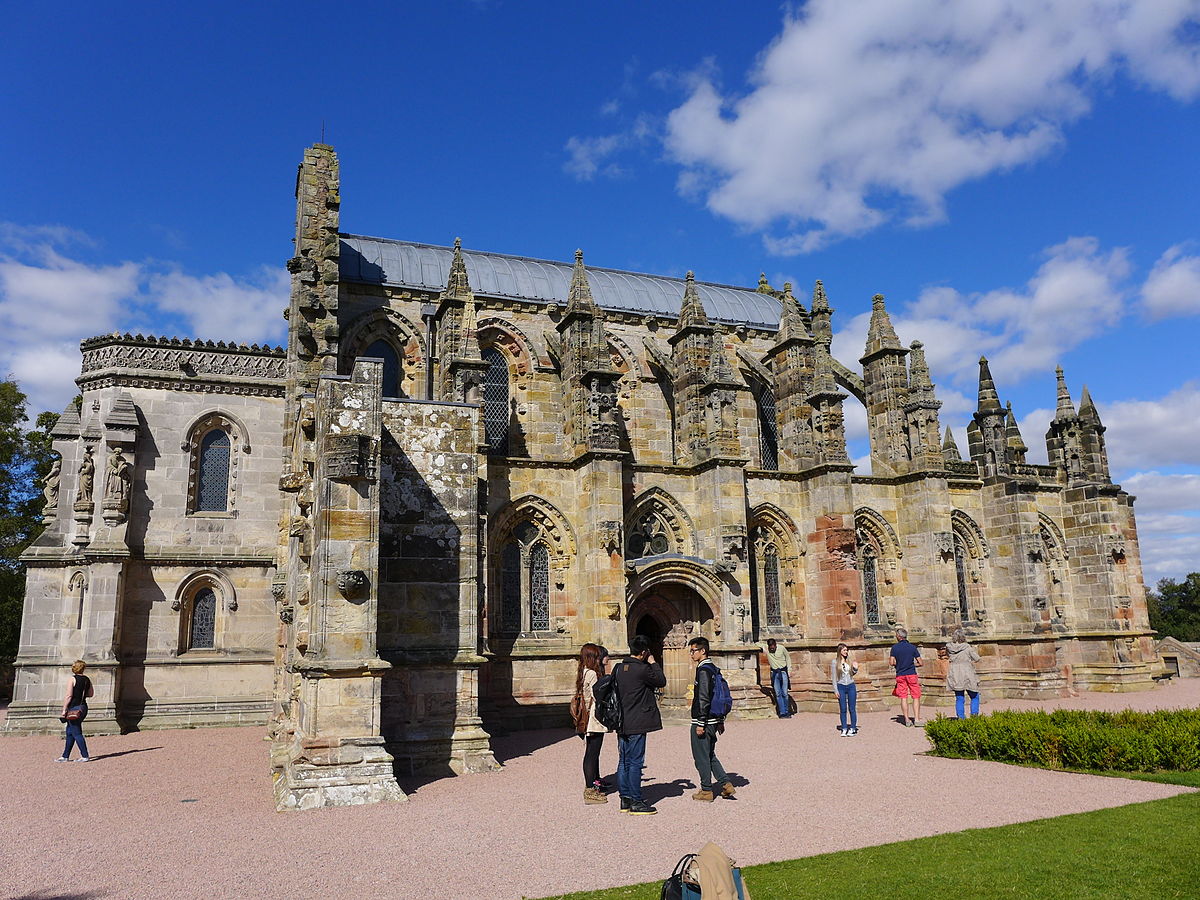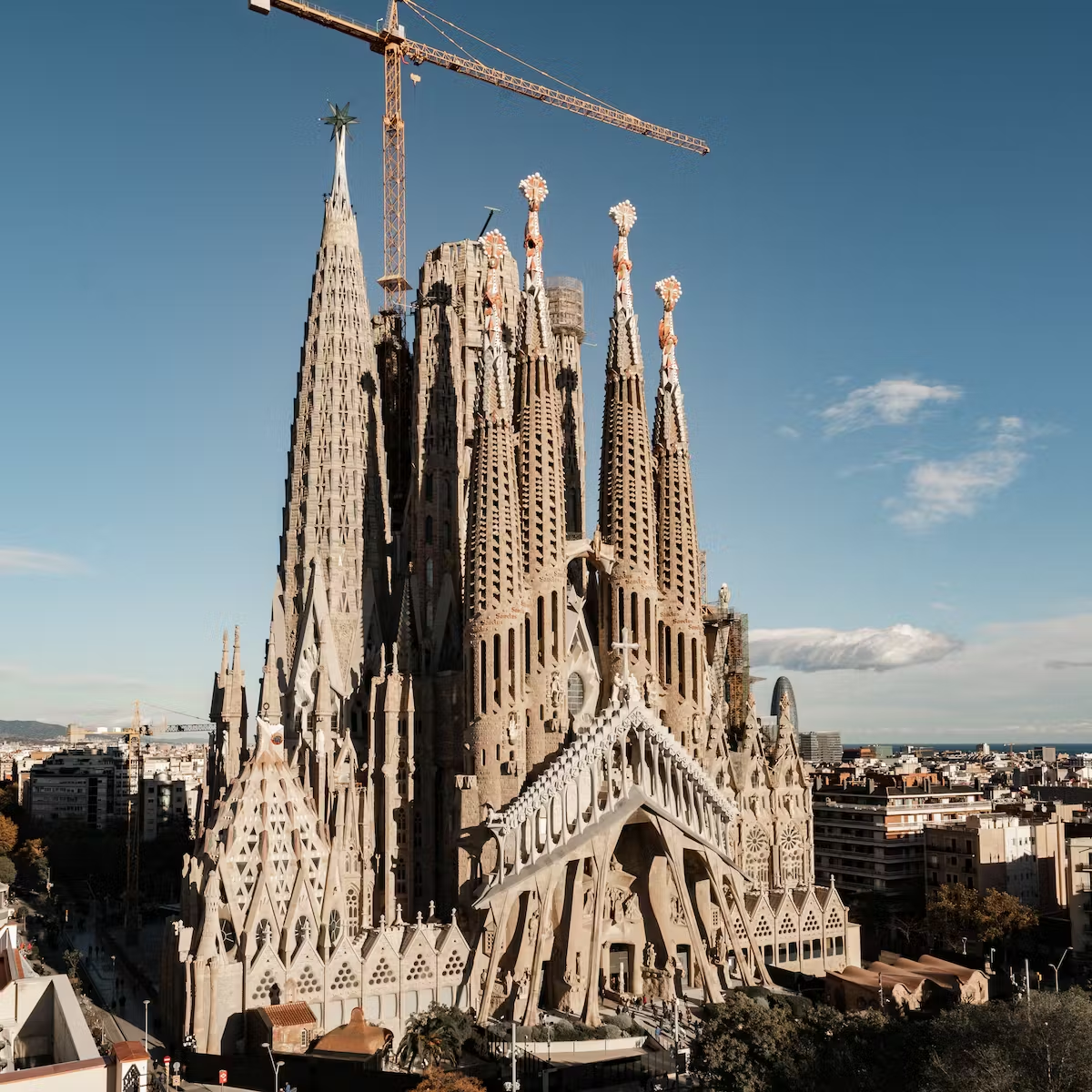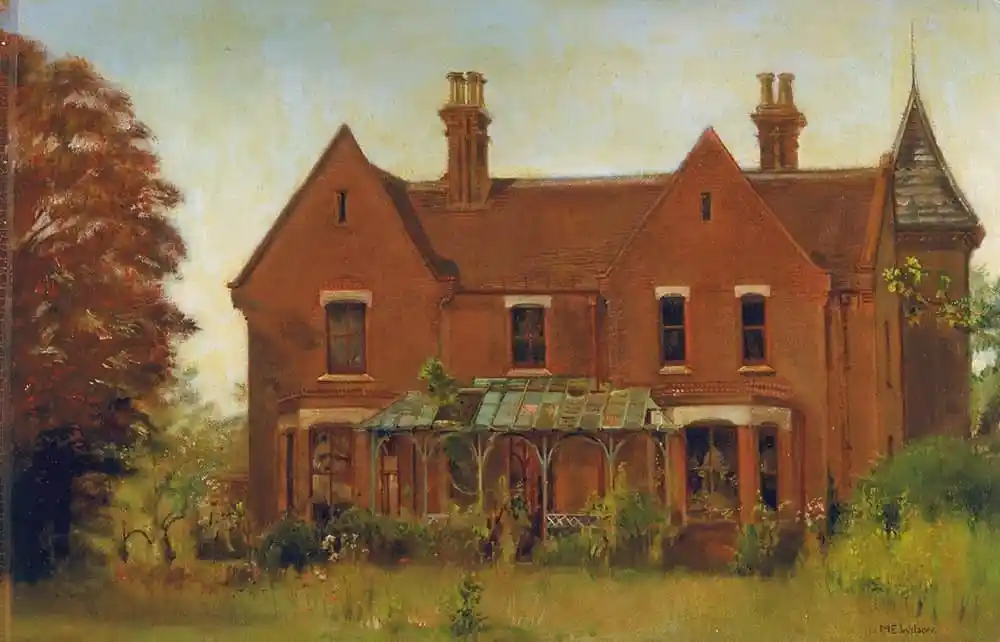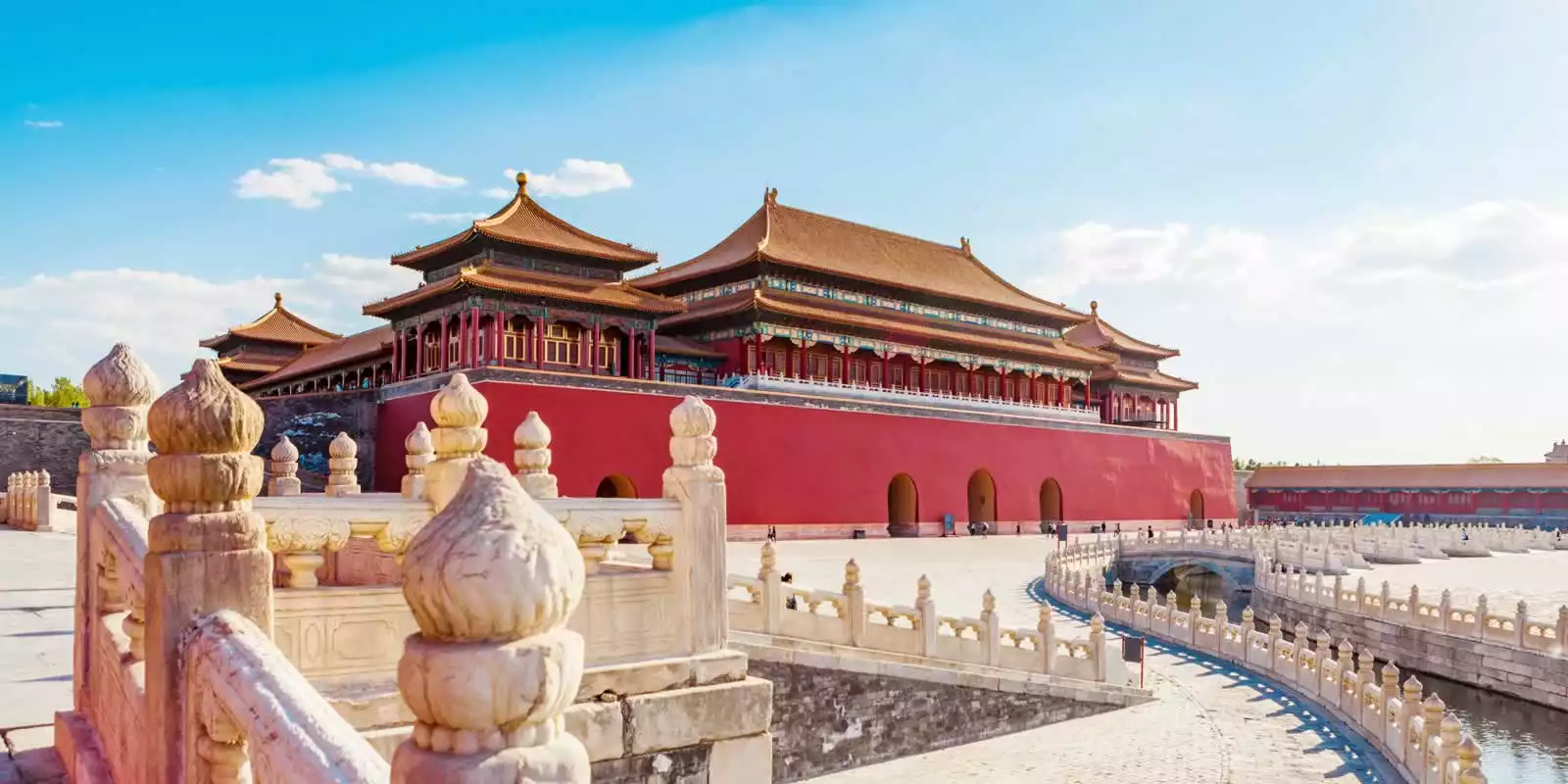Black Magic In Architecture Across History - From Legends, Mythology And Real Stories
Architecture, as an art form, has always reflected the beliefs, ideologies, and cultural practices of societies throughout history. However, amidst the grandeur of architectural marvels, there are tales and rumors of a darker side stories of black magic interwoven into the fabric of buildings and structures.
Author:George EvansJul 03, 20253.9K Shares396.1K Views
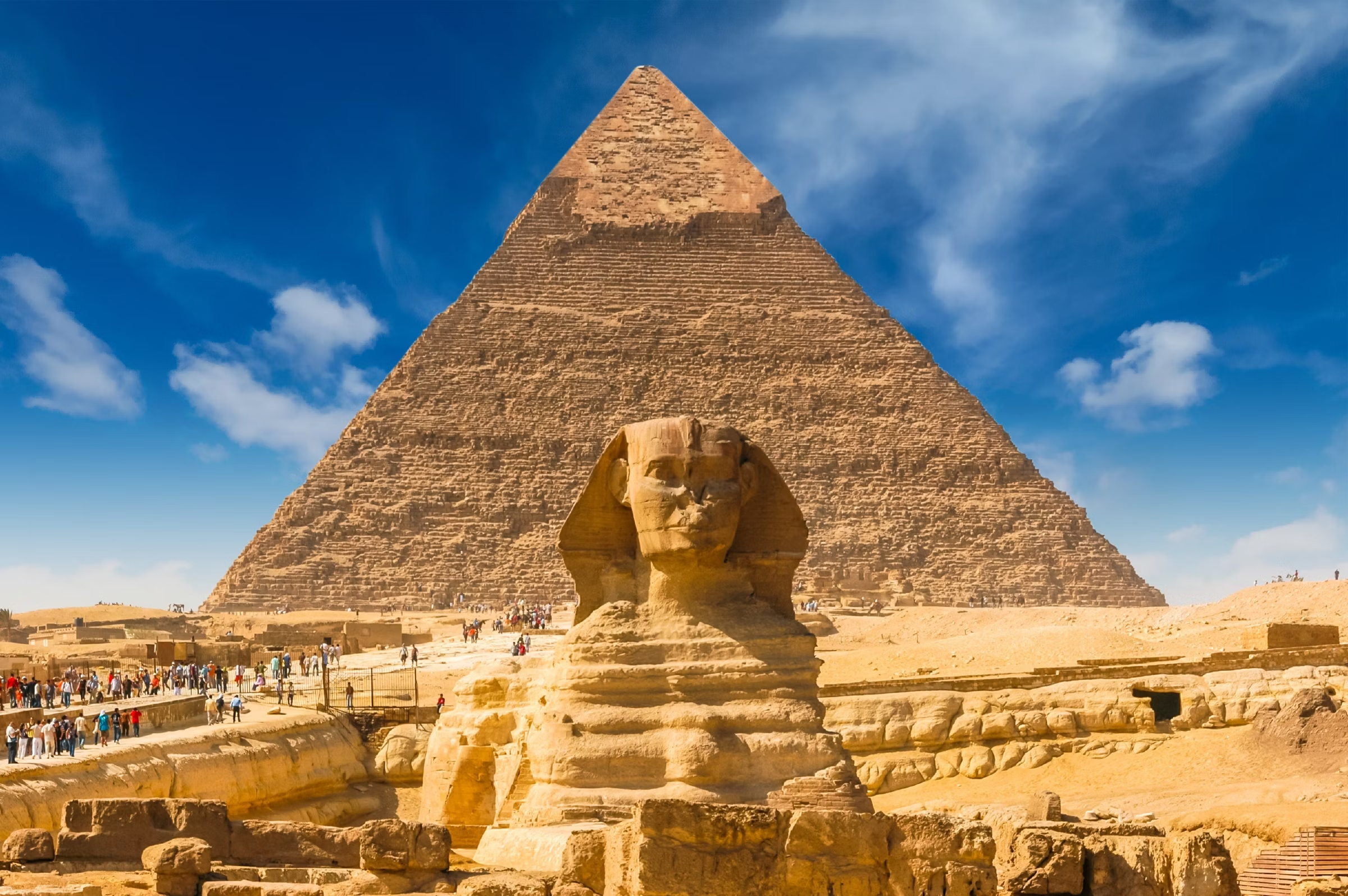
Architecture, as an art form, has always reflected the beliefs, ideologies, and cultural practices of societies throughout history. However, amidst the grandeur of architectural marvels, there are tales and rumors of a darker side stories of black magic interwoven into the fabric of buildings and structures. This article explores the intriguing and mysterious connections between black magic in architectureacross different time periods.
Ethics And Interpretation - Unraveling The Influence Of Black Magic In Architecture
When discussing the topic of black magic in architecture, it is crucial to address the ethical implications and the subjective nature of interpretation.
Historical Context And Cultural Beliefs
To understand the alleged presence of black magic in architecture, it is necessary to consider the historical context and the prevailing cultural beliefs of each era. What might be perceived as black magic today could have been seen as sacred or symbolic in the past.
Symbolism And Allegory
“„The representation of abstract ideas or principles by characters, figures, or events in narrative, dramatic, or pictorial form. An art form, as a story, painting, or sculpture, in which the components have a symbolic, figurative meaning. A visible symbol representing an abstract idea,- Lachiusa, C. - Architect
Architecture often employs symbolism and allegory to convey deeper meanings and evoke emotions. However, the interpretation of these symbols can vary greatly. What some perceive as dark or occult in nature may simply be a representation of spiritual or philosophical concepts.
Artistic License And Expression
Architects, like other artists, often exercise their creative freedom to imbue their designs with personal expression and aesthetic choices. Symbolic elements and unconventional forms may not necessarily have ties to black magic but rather reflect an artist's unique vision or cultural influences.
Ancient World - Mystical Influences In Architecture
In ancient civilizations, such as Egypt, Mesopotamia, and Greece, architecture often incorporated mystical beliefs and practices.
Egyptian Pyramids - Gateways To The Afterlife
The pyramids of Egypt are renowned for their enigmatic symbolism. While their primary function was to serve as tombs for pharaohs, there are speculations about the involvement of black magic in their construction, particularly in the intricate alignment with celestial bodies and the ritualistic practices associated with the pyramid-building process.
Mesopotamian Ziggurats - Temples To The Gods
The ziggurats of Mesopotamia were monumental temple structures believed to bridge the earthly realm with the divine. They were intricately designed, often with astrological significance and esoteric rituals that some believe involved dark magical practices.
Greek Oracles And Sanctuaries - Divine Connections
Greek architecture frequently incorporated oracles and sanctuaries, where individuals sought divine guidance. These places were thought to be infused with supernatural energy and involved rituals that bordered on the mystical. Although not explicitly associated with black magic, these practices were often considered mysterious and enigmatic.
Medieval Era - Occult Symbolism In Cathedrals
During the medieval period, Christianity dominated Europe, and cathedrals became focal points of religious devotion. However, some cathedrals held subtle elements of occult symbolism.
Chartres Cathedral - Labyrinthine Mysteries
Chartres Cathedral in France is known for its labyrinth pattern on the floor. The labyrinth is said to represent a spiritual journey or initiation, but some speculate that the intricate design conceals esoteric knowledge and practices associated with black magic.
Rosslyn Chapel - Hidden Symbols And Secrets
Rosslyn Chapel in Scotland is famous for its intricate carvings and cryptic symbolism. Many believe that the chapel's architecture conceals knowledge associated with ancient mystical traditions, including black magic. Theories range from connections to the Knights Templar to the search for hidden relics.
Renaissance And Beyond - Alchemy And Hidden Wisdom
The Renaissance era witnessed a revival of interest in ancient knowledge, including alchemy and the interest of using different minerals, you can read here for more information.
Palazzo Vecchio - Mysteries Of The Medici
The Palazzo Vecchio in Florence, Italy, was home to the powerful Medici family. The building's design incorporates various symbols and hidden chambers that have given rise to theories of alchemical experimentation and connections to black magic.
Freemasonry And Architecture - Esoteric Influences
Freemasonry, an influential secret society, had a significant impact on architectural design. Masonic symbolism and rituals are believed to have influenced the construction of numerous buildings, including the United States Capitol and the Bank of England, leading to speculations of hidden occult practices.
Modern Era - The Occult Revival And Architectural Symbolism
In the modern era, the occult and esoteric practices experienced a resurgence, influencing architectural design and symbolism.
Art Nouveau And Symbolism - Hidden Meanings In Design
Symbolism and Art Nouveauwere two concurrent art movements that each had their own existence but frequently coexisted on a single item.
The abstract use of symbols to convey the spiritual truth that underlies the material world is the emphasis of symbolism. The goal of Art Nouveau was to update and elevate composition and design. The flowing lines and frequently ethereal quality of Art Nouveau provided the ideal setting for the symbolists' desire to create images from their fantasies.
“„No language is rude that can boast polite writers- Aubrey Beardsley, painter.
Antoni Gaudí And The Sagrada Família - Sacred Geometry And Mystical Influences
The Sagrada Família, designed by the renowned architect Antoni Gaudí in Barcelona, Spain, exemplifies a fusion of architecture and mysticism. Gaudí's incorporation of sacred geometry, symbolism, and religious mysticism into the design suggests a deep connection to esoteric principles and metaphysical concepts.
Contemporary Speculations - The Haunting Of Modern Structures
Even in contemporary times, rumors and speculations about black magic persist, often attributed to notable modern architectural works.
The Louvre Pyramid - Alleged Dark Forces At Work
The construction of the Louvre Pyramid in Paris, designed by architect I.M. Pei, was met with controversy and rumors of occult influence. Some believed that the pyramid's placement and design were associated with mysterious forces and secret societies, although these claims are largely unsubstantiated.
The Denver International Airport - Conspiracies And Enigmatic Symbols
The Denver International Airport in Colorado, USA, has been the subject of numerous conspiracy theories, some suggesting occult symbolism in its artwork and architecture. Alleged connections to secret societies, apocalyptic prophecies, and hidden messages have fueled speculations of a deeper, darker purpose behind the airport's design.
Dark Legends And Mysteries: Stories Of Haunted Structures
Alongside the speculative connections between black magic and architecture, there are legends and stories of haunted buildings that add an eerie element to the topic.
The Tower Of London - Tales Of Curses And Dark Forces
The Tower of London, with its long and storied history, has been associated with numerous tales of curses and supernatural occurrences. From the mysterious disappearance of the Princes in the Tower to reports of ghostly apparitions, these stories fuel the notion of dark forces at play within its formidable walls.
The Winchester Mystery House - A Mansion Of Secrets
The Winchester Mystery House in California, USA, is renowned for its peculiar design and labyrinthine layout. Legend has it that Sarah Winchester, the eccentric owner, continuously constructed the mansion to ward off vengeful spirits. The house's peculiarities and alleged occult influences have made it a subject of fascination and speculation.
The Borley Rectory - The Most Haunted House In England
The Borley Rectory, often dubbed as the most haunted house in England, has attracted attention for its alleged supernatural phenomena. From poltergeist activity to sightings of ghostly figures, the rectory's haunted reputation has made it a prominent example of the intersection between architecture and the occult.
Modern Interpretations - Symbolic And Conceptual Expressions
In contemporary architecture, artists and designers continue to explore symbolism and conceptual expressions, occasionally incorporating themes associated with black magic.
Contemporary Art Installations - Exploring The Shadow
In the realm of art installations, there have been instances where artists have delved into the dark and mystical aspects of human existence. These thought-provoking works often challenge societal norms, inviting viewers to contemplate the enigmatic and hidden aspects of their own lives.
Legends And Folklore - Supernatural Tales In Structures
Modern structures, particularly those with unique or unconventional designs, occasionally become subjects of urban legends and folklore. These tales may involve rumored occult rituals, mysterious deaths, or supernatural occurrences, adding an element of intrigue to the architecture itself.
Mythology Of Greece
In ancient Greece, there existed a close connection between mythology, art, and architecture. Greek mythology, which was centered on the gods and heroes of Greek religion, served as a significant source of ideas for works of art and architectural design.
The Parthenon in Athens is among the most renowned instances of how Greek mythology has influenced architecture. A number of sculptures of Greek gods and heroes could be seen in this temple, which was devoted to Athena, the city's patron goddess. For instance, the Parthenon frieze showed a parade of gods and heroes, and the sculptures on the pediments, which are the triangular spaces above the entrance, were taken from the stories of Athena and Poseidon. A large statue of the goddess Athena Parthenos, made of gold and ivory, was also present in the temple.
Egypt Mythology
Religion and mythology were closely entwined with the civilization's art and architecture in ancient Egypt. The gods and goddesses of that religion, such as Ra, Horus, and Anubis, had a significant influence on artwork and architectural design in ancient Egypt.
The Great Pyramid of Giza is among the most prominent instances of how Egyptian mythology has influenced building. This famous building, which served as Pharaoh Khufu's tomb, was decorated with a number of exquisite hieroglyphs showing Egyptian mythological gods and goddesses. The pyramid also had a number of statues and sculptures, including the Sphinx, a representation of the god Horus with a lion's body and a human head.
Similar to this, other Egyptian temples and religious structures were also ornamented with hieroglyphs and murals showing Egyptian mythology's gods and goddesses. The Temple of Ra at Heliopolis, which was erected in honor of the deity of the sun, or the Temple of Horus in Edfu, which was erected in honor of the god of the sky, are just two examples of the numerous temples that were constructed to honor certain gods and goddesses. Along with reliefs showing scenes from Egyptian tales and legends, these temples were also embellished with statues and sculptures of gods and goddesses.
Chinese Mythology
The gods and goddesses of Chinese mythology are frequently equated with the elements of nature, such as the sky, the earth, and the sea. These deities were revered as strong beings in charge of the wellbeing of the populace and masters of the natural world. These gods and goddesses are frequently depicted in Chinese art and architecture, as are dragons, which are strong and auspicious creatures according to Chinese mythology.
A noteworthy illustration of Chinese mythology's profound effect on architecture is the Forbidden City in Beijing. This enormous palace complex, which housed the Chinese emperor for more than 500 years, is decorated with elaborate carvings and sculptures of dragons as well as gods and goddesses from Chinese mythology. The palace also has a variety of other mythological figures and images, like the phoenix, a mythical bird that symbolizes luck and fortune.
Dragons, which are revered as powerful and lucky animals, and mythological gods and goddesses also have significant roles in Chinese art. Chinese paintings, sculptures, and pottery frequently included these deities. Archaeologists have uncovered several of these artistic creations, and they offer a window into the customs and beliefs of ancient Chinese culture.
Biblical Mithology
The Bible and Christian mythology have greatly influenced Christian art and architecture, which may be seen in churches, cathedrals, and other places of worship. Throughout history, several works of art have drawn their inspiration from the narratives, figures, and events found in the Bible and Christian mythology.
Churches, cathedrals, and other places of worship have designs and ornamentation that reflect biblical and Christian mythology. Intricate carvings, sculptures, and frescoes that depict scenes from the Bible and Christian mythology may be seen on several of these structures. An excellent illustration of how Christian mythology has influenced design is Notre-Dame in Paris. The cathedral is decorated with statues of saints, angels, and other religious figures, in addition to biblical characters like the Virgin Mary and Jesus Christ.
People Also Ask
What Does Black Mean In Architecture?
In architecture, black is often associated with elegance, sophistication, and timelessness. It represents a sense of formality, authority, and strength. Black can create a bold contrast when used alongside other colors or materials, emphasizing architectural elements and creating visual impact. It can also convey a sense of mystery, depth, and depthlessness, adding an element of intrigue to architectural spaces.
Why Is Black Used In Architecture?
Black is used in architecture for various reasons:
- Contrast and Emphasis:Black can be employed to create contrast and emphasize specific architectural features, whether it's a doorframe, a window, or a structural element. It draws attention and provides a focal point within a design.
- Neutral Background:Black can serve as a neutral background that allows other colors, textures, or materials to stand out. It provides a visual grounding, allowing the surrounding elements to take center stage.
- Modern Aesthetic: Black is often associated with a sleek and modern aesthetic. Its use can help achieve a contemporary and minimalist design, especially when combined with clean lines and simple forms.
- Symbolism and Meaning:Black can be used symbolically to convey certain emotions or concepts. It may represent strength, sophistication, or even the idea of void or absence. Its use can help evoke specific moods or narratives within a space.
What Is The Power Of Black In Design?
Black possesses several powerful attributes in design:
- Timelessness:Black is a color that transcends trends and time. It has a classic and enduring quality that can give a design a timeless appeal.
- Drama and Contrast: Black has the power to create dramatic visual effects, particularly when used in contrast with lighter colors. It can add depth, intensity, and a sense of intrigue to architectural compositions.
- Elegance and Sophistication:Black has long been associated with elegance and sophistication. Its use in design can elevate the perceived quality and prestige of a space.
- Focus and Clarity:Black can provide visual clarity by defining and highlighting architectural elements. It helps to establish a clear hierarchy within a design, guiding the viewer's attention to specific focal points.
- Versatility:Black is a versatile color that can be integrated into a wide range of architectural styles and contexts. It can be used to create a sense of formality, as well as to add a contemporary or edgy touch to a design.
Conclusion
Black magic and architecture have been intertwined in the fabric of history, with tales of occult practices and esoteric symbolism captivating our imagination. While these stories add an air of mystery to architectural wonders, it is important to approach them with a critical mindset, acknowledging that they often stem from legends, speculations, and a fascination with the unknown.
Architectural designs throughout history have reflected the beliefs, aspirations, and cultural practices of their time, whether through mystical influences, symbolism, or spiritual connections. Exploring the intersection of black magic and architecture allows us to delve into the depths of human creativity, curiosity, and the eternal quest for hidden knowledge.
Ultimately, the allure of black magic in architecture lies in its ability to transport us to a realm where mystery and imagination intertwine, reminding us that even in the realm of buildings and structures, there is room for enchantment, wonder, and the unexplained.
Jump to
Ethics And Interpretation - Unraveling The Influence Of Black Magic In Architecture
Ancient World - Mystical Influences In Architecture
Medieval Era - Occult Symbolism In Cathedrals
Renaissance And Beyond - Alchemy And Hidden Wisdom
Modern Era - The Occult Revival And Architectural Symbolism
Contemporary Speculations - The Haunting Of Modern Structures
Dark Legends And Mysteries: Stories Of Haunted Structures
Modern Interpretations - Symbolic And Conceptual Expressions
Legends And Folklore - Supernatural Tales In Structures
People Also Ask
Conclusion

George Evans
Author
George Anderson, an exceptional architectural designer, envisions and brings to life structures that transcend the realm of imagination. With an unwavering passion for design and an innate eye for detail, George seamlessly blends form and function, creating immersive spaces that inspire awe.
Driven by a deep appreciation for the interplay of space, light, and materials, George's innovative approach redefines the possibilities of architectural design. His visionary compositions leave an indelible mark, evoking a sense of wonder and transforming the built environment.
George Anderson's transformative designs and unwavering dedication continue to shape the architectural landscape, pushing the boundaries of what is possible and inspiring generations to come.
Latest Articles
Popular Articles
